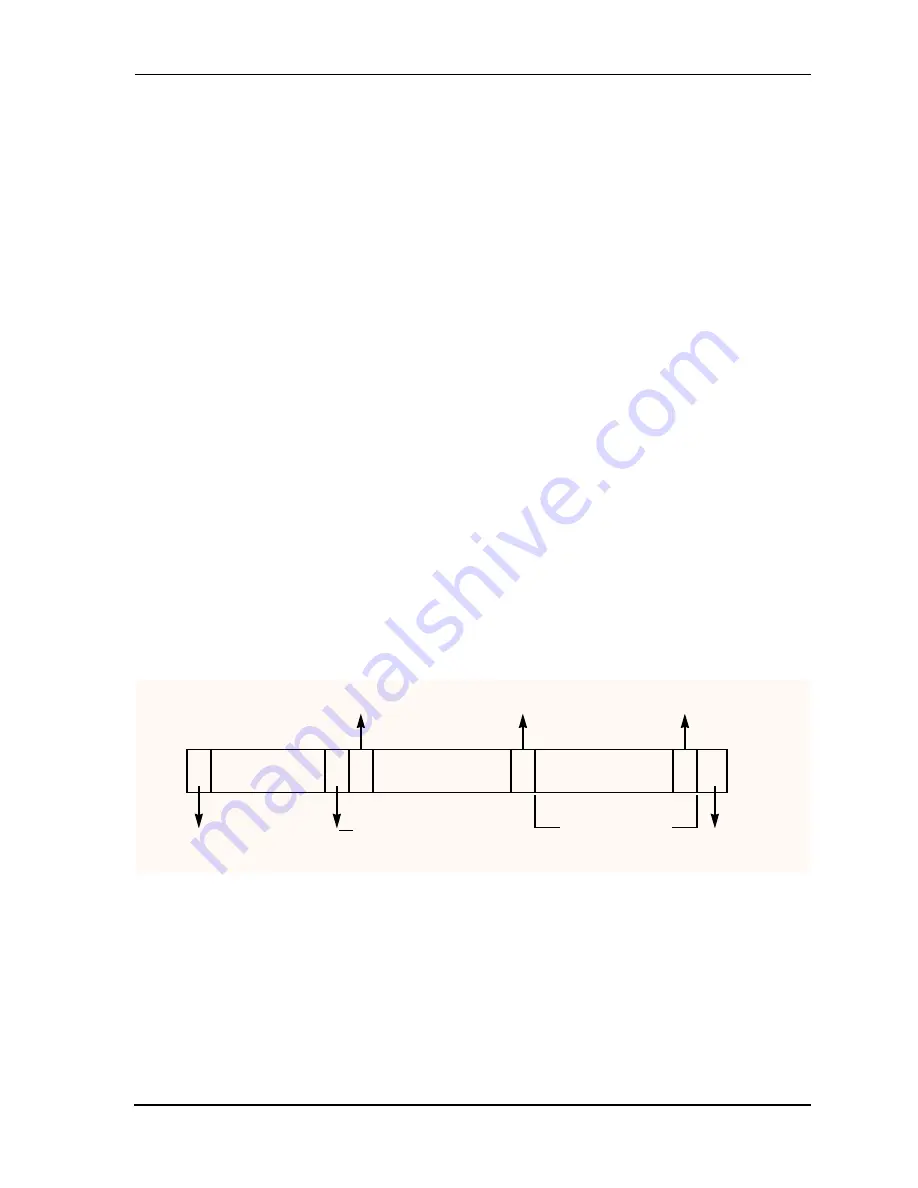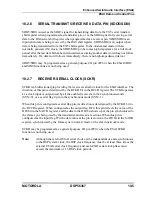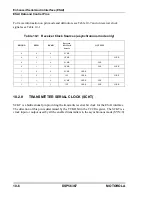
Serial Host Interface
Characteristics Of The I
2
C Bus
MOTOROLA
DSP56367
9-21
A device generating a signal is called a transmitter, and a device receiving a signal is called a
receiver. A device controlling a signal is called a master and devices controlled by the master
are called slaves. A master receiver must signal an end-of-data to the slave transmitter by not
generating an acknowledge on the last byte clocked out of the slave device. In this case the
transmitter must leave the data line high to enable the master to generate the stop event.
Handshaking may also be accomplished by using the clock synchronizing mechanism. Slave
devices can hold the SCL line low, after receiving and acknowledging a byte, to force the
master into a wait state until the slave device is ready for the next byte transfer. The SHI
supports this feature when operating as a master device and waits until the slave device
releases the SCL line before proceeding with the data transfer.
9.6.2
I
2
C DATA TRANSFER FORMATS
I
2
C bus data transfers follow the following process: after the start event, a slave device
address is sent. The address consists of seven address bits and an eighth bit as a data direction
bit (R/W). In the data direction bit, zero indicates a transmission (write), and one indicates a
request for data (read). A data transfer is always terminated by a stop event generated by the
master device. However, if the master device still wishes to communicate on the bus, it can
generate another start event, and address another slave device without first generating a stop
event (the SHI does not support this feature when operating as an I
2
C master device). This
method is also used to provide indivisible data transfers. Various combinations of read/write
formats are illustrated in Figure 9-10 and Figure 9-11.
Figure 9-10 I
2
C Bus Protocol For Host Write Cycle
S
A
A
0
Slave Address
R/W
S, P
A
Start
Start or
Bit
Stop Bit
Slave Device
ACK from
Slave Device
ACK from
Slave Device
ACK from
N = 0 to M
Data Bytes
First Data Byte
Data Byte
AA0425
Summary of Contents for DSP56367
Page 16: ...xvi MOTOROLA CONTENTS Paragraph Number Title Page Number ...
Page 22: ...xxii MOTOROLA List of Figures Figure Number Title Page Number ...
Page 26: ...xxvi MOTOROLA List of Tables Table Number Title Page Number ...
Page 148: ...4 6 DSP56367 MOTOROLA Design Considerations PLL Performance Issues ...
Page 248: ...9 30 DSP56367 MOTOROLA Serial Host Interface SHI Programming Considerations ...
Page 306: ...10 58 DSP56367 MOTOROLA Enhanced Serial Audio Interface ESAI ESAI Initialization Examples ...
Page 389: ...Bootstrap ROM Contents MOTOROLA DSP56367 A 15 end ...
Page 390: ...A 16 DSP56367 MOTOROLA Bootstrap ROM Contents ...
Page 432: ...C 8 DSP56367 MOTOROLA JTAG BSDL ...
Page 484: ...D 52 DSP56367 MOTOROLA Programmer s Reference ...
Page 490: ...E 6 DSP56367 MOTOROLA Power Consumption Benchmark ...
Page 516: ...F 26 DSP56367 MOTOROLA IBIS Model ...
Page 522: ...Index 6 MOTOROLA Index ...
Page 523: ......
















































